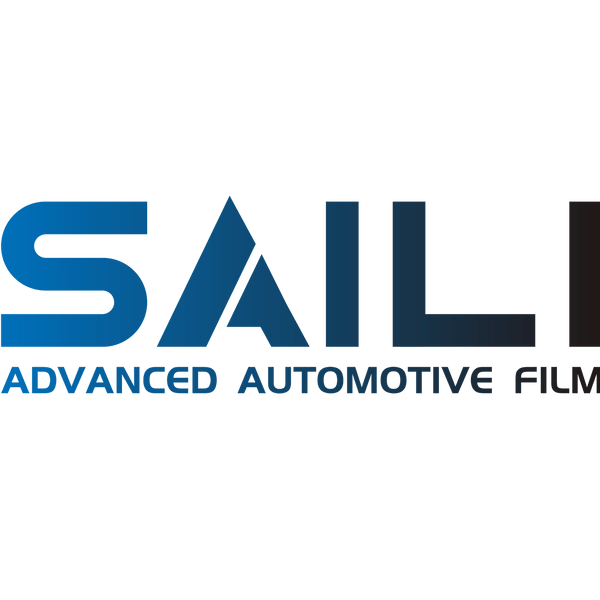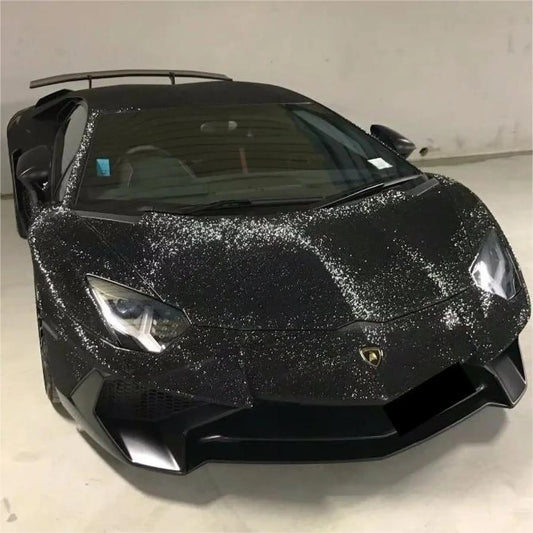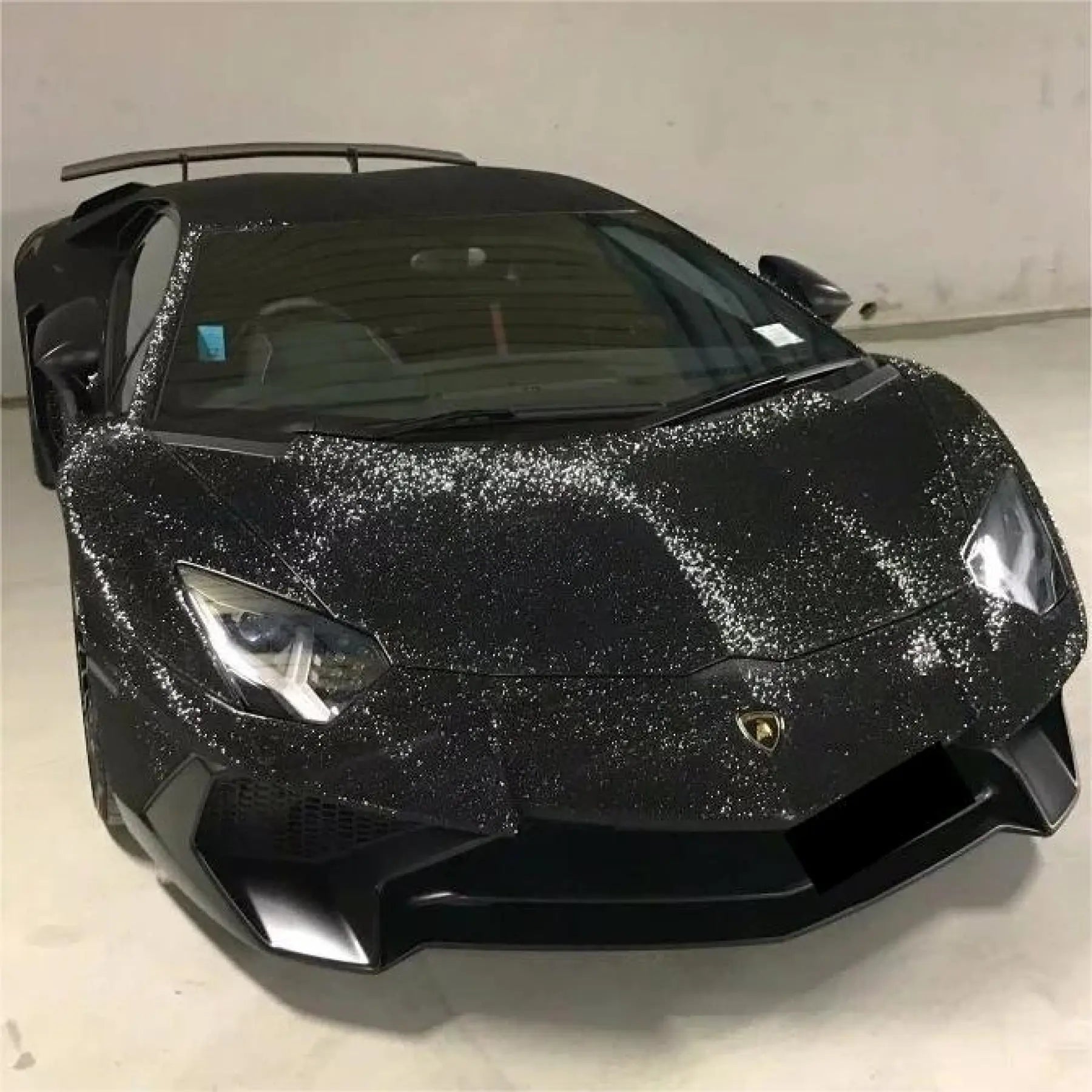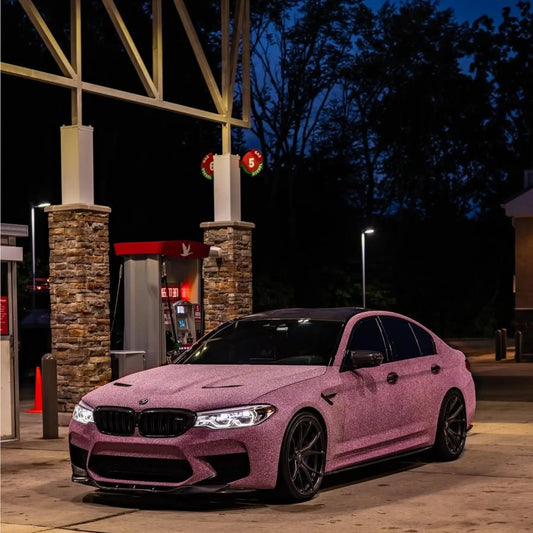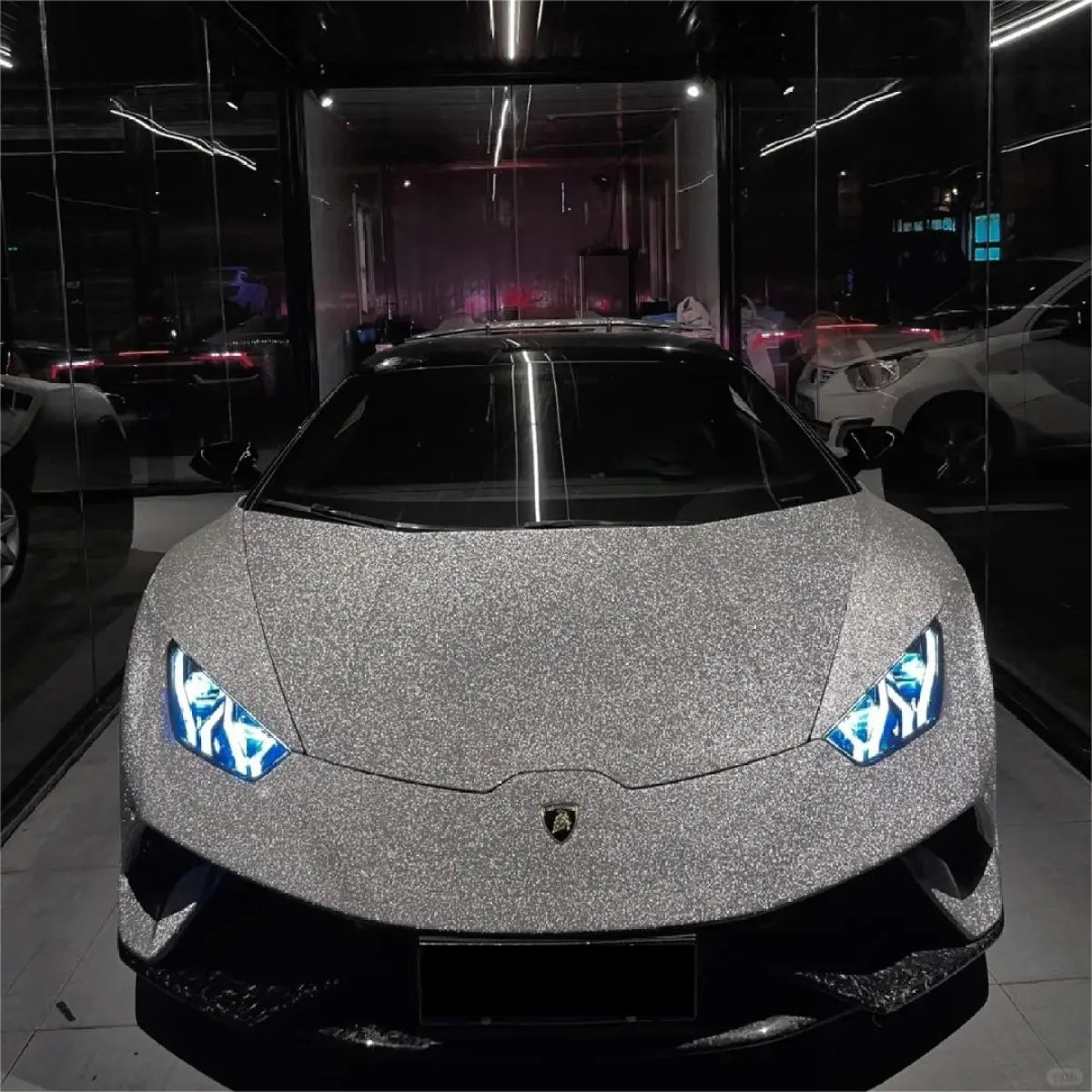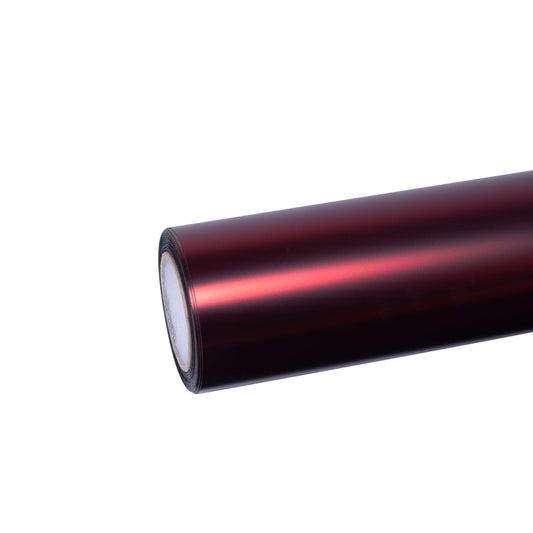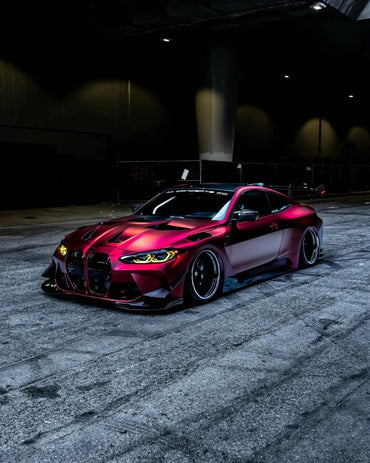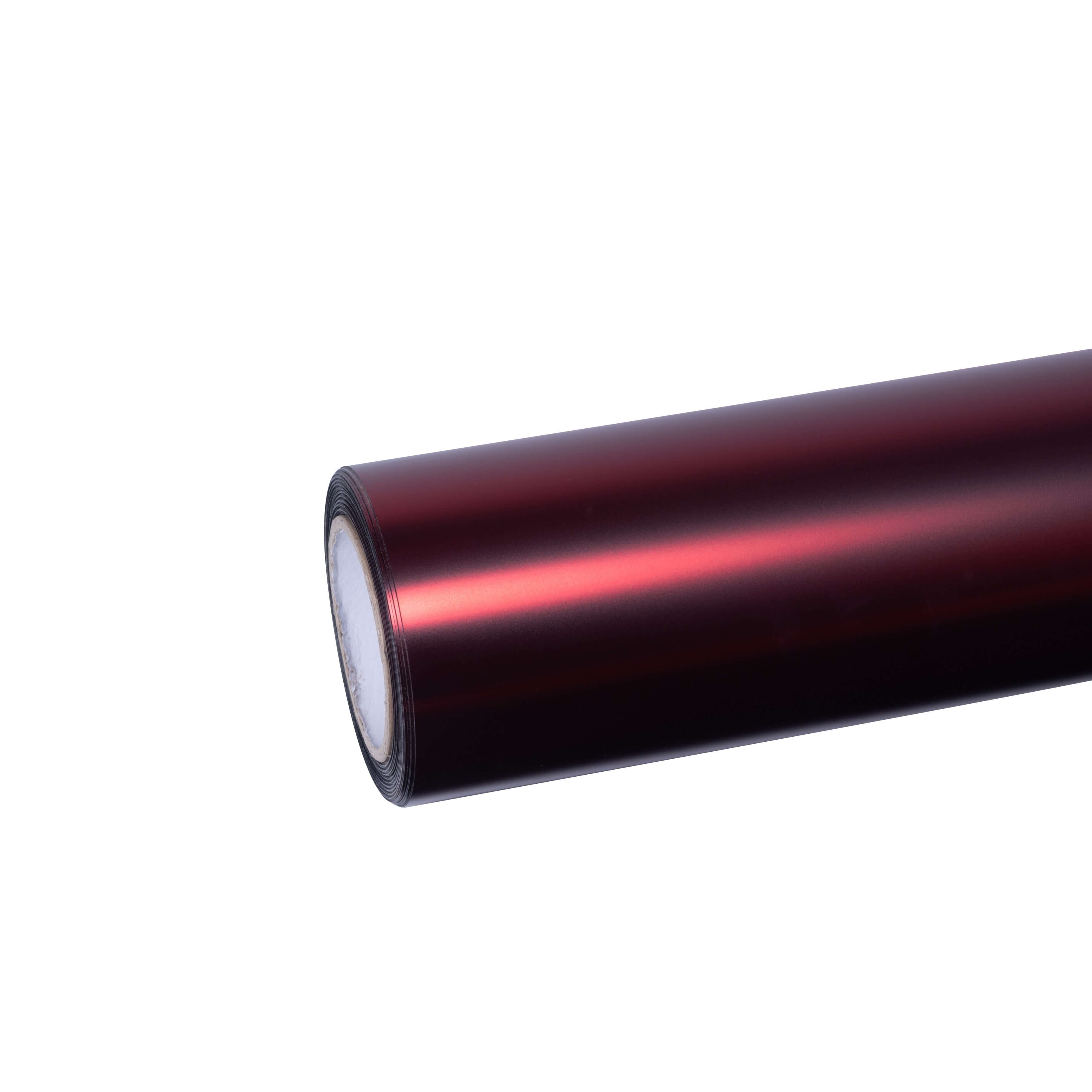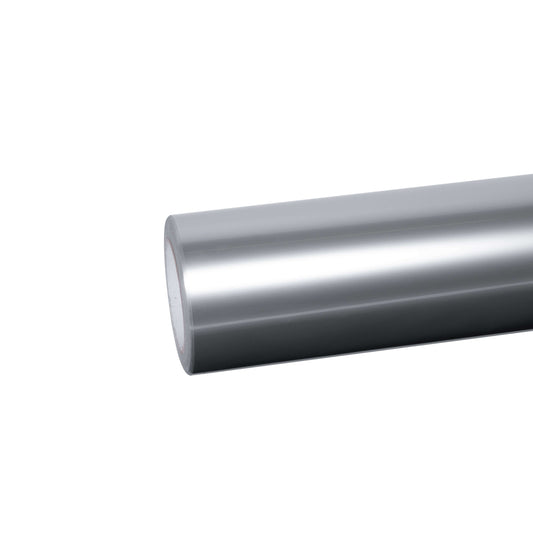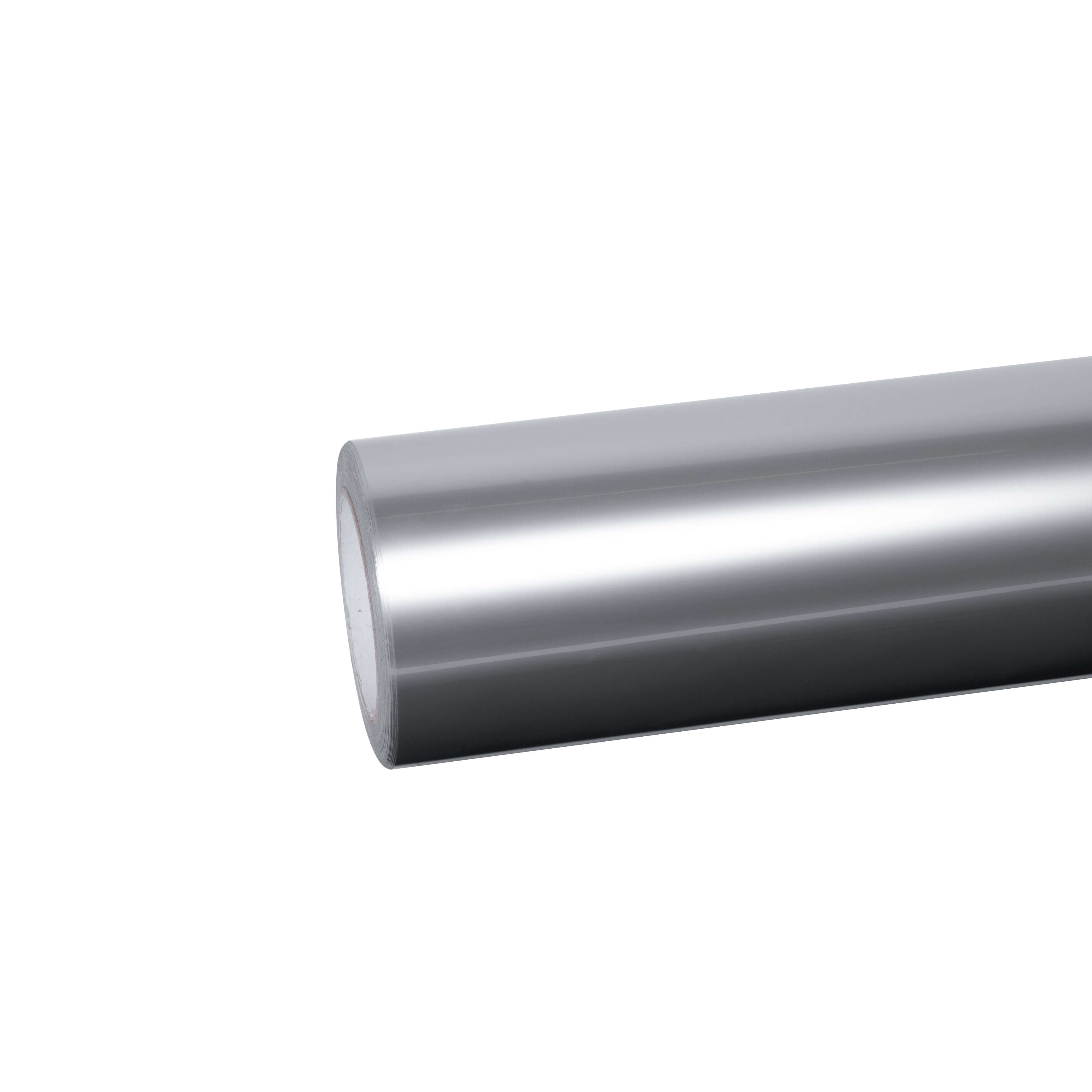Understanding Specialty Vinyl Wrap Categories
Before exploring ceramic coating applications, understanding the unique characteristics of specialty wraps is essential for selecting appropriate protective solutions.
Chrome and Liquid Finishes
Liquid chrome wraps create mirror-like reflective surfaces that amplify light and surroundings. These high-gloss metallic finishes include variations from liquid gloss indigo blue to metallic cherry red, each delivering exceptional visual impact. Unlike traditional wraps, chrome surfaces show every imperfection—fingerprints, water spots, and microscopic scratches become immediately visible on reflective finishes.
The reflective nature makes chrome wraps particularly vulnerable to surface contamination. Bird droppings, tree sap, and industrial fallout create visible etching on mirror surfaces far more prominently than on standard finishes. This heightened visibility demands superior protective measures that ceramic coating provides.
Color-Shifting and Chameleon Wraps
Rainbow laser vinyl wraps feature holographic, iridescent finishes that shift colors based on viewing angles and lighting conditions. These specialty films incorporate multi-layer optical technology that creates the mesmerizing color-changing effects. Galaxy chameleon wraps transition between complementary hues—pink to white, blue to white, or gold to white—creating dynamic visual experiences.
According to automotive wrap technology research, color-shifting films use specialized pigments and layered construction to achieve their optical effects. This complex structure requires protection that won't interfere with light transmission or alter the intended color play.
Glitter and Sparkle Finishes
Glitter sparkle car wraps incorporate metallic flakes and reflective particles that create brilliant sparkle effects. These textured finishes present unique coating challenges due to their three-dimensional surface topology. Standard ceramic coatings designed for smooth surfaces may pool in the recesses between glitter particles, creating uneven appearance.
Crystal and Metallic Combinations
Crystal vinyl wraps and metallic vinyl wraps blend traditional color with enhanced depth and dimensional effects. These finishes fall between standard gloss and extreme specialty wraps, offering sophistication without the maintenance intensity of full chrome or holographic finishes.
Why Chrome and Specialty Wraps Need Ceramic Coating
Specialty wraps face intensified environmental threats compared to standard vinyl finishes. Their unique surface properties create specific vulnerabilities that ceramic coating addresses effectively.
Enhanced UV Vulnerability
Reflective and metallic surfaces absorb and reflect UV radiation differently than standard pigmented vinyl. Chrome wraps particularly suffer from UV exposure because the metallic layer oxidizes when unprotected, creating dull spots and discoloration. Color-shifting wraps lose their optical properties as UV radiation degrades the multi-layer construction that creates their color-changing effects.
Ceramic coating provides a UV-blocking barrier that prevents radiation from reaching the sensitive wrap material. This protection maintains color vibrancy in holographic wraps and prevents the oxidation that ruins chrome finishes.
Scratch Visibility Amplification
Every scratch on a chrome or holographic surface becomes a visual focal point. The reflective nature of these wraps means scratches catch and scatter light, creating visible lines that mar the mirror-perfect appearance. Even microscopic scratches invisible on standard wraps become problematic on specialty finishes.
Ceramic coating's hardness rating provides a sacrificial layer that absorbs minor abrasions before they reach the wrap surface. While not impervious to all scratches, the coating significantly reduces the frequency and severity of surface damage.
Contamination Etching
Bird droppings, bug splatter, and tree sap contain acidic compounds that etch specialty wrap surfaces rapidly. On chrome and holographic finishes, these etchings create permanent dull spots that destroy the uniform reflective appearance. The three-dimensional nature of these finishes means contamination lodges in texture variations, making removal difficult without aggressive scrubbing that causes additional damage.
The hydrophobic properties of ceramic coating prevent contaminants from bonding to the wrap surface. Liquids bead and run off, carrying away dirt and reducing the contact time for acidic substances to cause etching.
Selecting Ceramic Coatings for Specialty Finishes
Not all ceramic coatings suit specialty wraps. The wrong product selection can ruin the very effects you're trying to protect.
Chrome-Specific Formulations
Chrome and liquid finishes require ceramic coatings that enhance rather than diminish reflectivity. Standard coatings may create a slightly hazy appearance on mirror surfaces, reducing the perfect reflection that makes chrome wraps desirable. Specialty formulations for chrome maintain optical clarity while providing protective benefits.
When protecting liquid chrome wraps, verify the coating manufacturer explicitly certifies their product for mirror finishes. Request sample application on a small section before committing to full-vehicle coating.
Optical Interference Considerations
Color-shifting and holographic wraps depend on precise light transmission through multiple layers. Thick ceramic coatings can interfere with this optical effect, reducing the intensity or clarity of color transitions. Ultra-thin ceramic formulations designed for specialty wraps maintain the holographic effect while still providing protection.
For rainbow laser vinyl and chameleon finishes, prioritize coatings that advertise compatibility with iridescent and color-shifting surfaces. These products use modified polymer structures that don't interfere with light transmission.
Texture-Compatible Products
Glitter and sparkle wraps need coatings that flow into surface texture without pooling or creating thickness variations. Self-leveling ceramic formulations work best for these applications, distributing evenly across three-dimensional surfaces. Multiple thin coats typically produce better results than single thick applications on textured specialty wraps.
Application Process for Specialty Wrap Coating
Ceramic coating application on chrome and specialty finishes demands even greater precision than standard wrap coating. The unforgiving nature of reflective surfaces makes every application flaw visible.
Critical Surface Preparation
Specialty wraps must be absolutely pristine before coating application. Any trapped contaminant, oil residue, or adhesive transfer becomes permanently sealed beneath the ceramic layer and remains visible on reflective surfaces indefinitely.
Advanced Preparation Protocol:
- Initial wash with pH-neutral vinyl-safe soap using the two-bucket method
- Clay bar treatment to remove embedded contaminants that washing can't eliminate
- Isopropyl alcohol wipe (50/50 mixture with distilled water) to eliminate all oils
- Panel-by-panel inspection under strong LED lighting to identify any remaining imperfections
- Final tack cloth wipe to remove any lint or dust particles
- Climate-controlled environment maintaining 60-75°F with humidity below 60%
For glitter sparkle wraps, additional attention to texture valleys ensures no contamination hides between particles.
Professional Application Technique
Chrome and specialty wrap coating requires professional expertise for optimal results. DIY applications on reflective surfaces typically show streaking, high spots, and uneven coverage immediately visible in the mirror-like finish.
Professional Application Advantages:
- Controlled environment preventing airborne contamination
- Proper lighting for identifying coverage gaps
- Experience with specialty surface handling
- Access to professional-grade coating products
- Warranty coverage for application quality
Application Method: Work in small 2-foot by 2-foot sections to ensure even coverage before the coating begins curing. Use cross-hatch application patterns—applying horizontally then vertically—to eliminate streaking on reflective surfaces. Professional installers often use infrared curing lamps to accelerate the bonding process on chrome surfaces, reducing the dust contamination risk during the initial cure phase.
Multi-Layer Strategy
Specialty wraps benefit from multiple thin ceramic coating layers rather than single thick applications. This approach provides several advantages:
- Reduced pooling in texture variations
- More uniform optical properties
- Enhanced total protection thickness
- Easier correction of application errors
Apply the base coat and allow full curing (typically 12-24 hours) before adding subsequent layers. Each layer bonds with the previous, creating cumulative protective thickness without the application challenges of single thick coats.
Maintaining Ceramic-Coated Specialty Wraps
Proper maintenance preserves both the ceramic coating and the specialty wrap beneath. Chrome and holographic finishes require gentler handling than standard wraps.
Specialized Washing Protocols
Hand washing remains mandatory for ceramic-coated specialty wraps. Automated car washes—even touchless versions—can damage reflective finishes through high-pressure water streams that stress the vinyl structure or harsh chemicals that degrade the coating.
Optimal Washing Method:
- Use dedicated vinyl wrap cleaning solution pH 7-9
- Ultra-soft microfiber wash mitts with deep pile
- Lukewarm water (never hot or cold extremes)
- Straight-line washing motions parallel to vehicle lines
- Immediate drying with filtered compressed air or microfiber drying towels
- Separate wash buckets for wheels/lower panels and upper panels
For liquid chrome wraps, consider using distilled or deionized water for final rinses to prevent water spot formation on mirror surfaces.
Contamination Response Protocol
Specialty wrap finishes demand immediate contamination removal. The longer acidic substances remain on chrome or holographic surfaces, the greater the risk of permanent damage despite ceramic coating protection.
Immediate Removal Procedure:
- Bird droppings/bug splatter: Spray with vinyl-safe quick detailer, let sit 2-3 minutes to soften, gently wipe with clean microfiber
- Tree sap: Apply isopropyl alcohol (diluted 1:1 with distilled water), gently rub with microfiber, rinse immediately
- Fuel spills: Immediate water rinse, mild soap wash, dry thoroughly
- Road tar: Use dedicated tar remover formulated for vinyl wraps, never petroleum-based solvents
Coating Maintenance Boosters
Ceramic coatings on specialty wraps benefit from quarterly maintenance treatments that refresh the hydrophobic properties and add additional protective layers. These spray-on boosters extend the base coating's effective lifespan and restore water-beading performance that diminishes over time.
Apply maintenance boosters every 2-3 months on rainbow laser wraps and chrome finishes exposed to harsh environmental conditions. These products take minutes to apply and significantly extend the coating's protective performance.
Specialized Considerations by Wrap Type
Different specialty finishes present unique coating challenges and benefits.
Dual-Color and Dream Wraps
Dual-color dream vinyl wraps create gradient transitions between complementary hues. Ceramic coating these finishes requires ensuring consistent coverage across both color zones without creating visible transition lines in the coating thickness. The protective layer should be uniform regardless of the underlying wrap color to prevent optical inconsistencies.
3D Carbon Fiber Textures
3D carbon fiber wraps feature deep texture that mimics authentic woven carbon. Ceramic coating must penetrate the texture valleys while not pooling excessively. Multiple thin coats work better than single thick applications, allowing each layer to settle into the texture before adding subsequent coats.
TPU Paint Protection Films
When combining TPU paint protection film with specialty wraps, the coating sequence matters significantly. Apply TPU as the base layer for impact protection, install the specialty wrap over it, then finish with ceramic coating as the top layer. This three-layer strategy delivers maximum protection: impact resistance from TPU, aesthetic customization from specialty wrap, and environmental protection from ceramic coating.
Cost-Benefit Analysis for Specialty Wrap Coating
Ceramic coating represents a significant investment, but the math favors protection for high-end specialty wraps.
Investment Breakdown
Chrome and specialty wrap costs:
- Full vehicle liquid chrome wrap: $3,000-6,000
- Rainbow laser wrap: $2,500-5,000
- Professional installation labor: $1,500-3,000
Ceramic coating investment:
- Professional specialty wrap coating: $800-1,500
- Premium multi-layer systems: $1,200-2,000
Protection ROI
Without ceramic protection, specialty wraps typically last 2-3 years before showing significant degradation. Ceramic coating can extend this to 4-6 years—essentially doubling the wrap's useful lifespan. On a $5,000 chrome wrap installation, the $1,200 coating investment prevents needing a $5,000 replacement two years earlier, delivering immediate positive return.
Additionally, ceramic-coated specialty wraps maintain higher resale value. Vehicles with pristine chrome or holographic wraps command premium prices in the used market, while degraded specialty finishes actually decrease vehicle value below stock paint.
Advanced Protection Strategies
Maximizing specialty wrap longevity involves combining multiple protective approaches.
Garage Storage and Environmental Control
Parking specialty-wrapped vehicles in climate-controlled garages provides the single most effective protection. UV exposure, temperature extremes, and environmental contamination all diminish when the vehicle lives indoors. For daily drivers where garage storage isn't feasible, covered parking significantly reduces UV damage.
When outdoor parking is unavoidable, breathable car covers designed specifically for vinyl wraps provide additional protection. Standard car covers can trap moisture and cause wrap degradation, so ensure any cover explicitly states vinyl wrap compatibility.
Paint Protection Film Hybrid Systems
For the ultimate protection on high-value vehicles, combine colored paint protection film or TPU wraps with specialty vinyl and ceramic coating. This multi-layer approach delivers:
- Impact resistance from TPU base layer
- Aesthetic customization from mid-layer specialty wrap
- Environmental protection from ceramic coating top layer
This strategy works exceptionally well for exotic vehicles and show cars where maintaining absolutely pristine appearance justifies the additional investment.
Common Mistakes and How to Avoid Them
Understanding what not to do prevents costly errors when coating specialty wraps.
Using Standard Ceramic Products
Applying standard paint-grade ceramic coatings to specialty wraps often produces disappointing results. These products may alter the reflective properties of chrome, interfere with color-shifting optics, or create hazy appearance on holographic finishes. Always use coatings specifically certified for vinyl wrap application and ideally formulated for the specific specialty finish type.
Excessive Coating Thickness
More coating doesn't equal better protection on specialty wraps. Thick ceramic layers can create cloudy appearance on chrome, reduce color-shifting intensity on holographic wraps, and pool unevenly in glitter texture. Follow manufacturer specifications precisely—typically 1-2 thin coats provide optimal protection without compromising the specialty finish appearance.
Inadequate Curing Time
Rushing the curing process ruins ceramic coating performance. Specialty wraps require full curing between coats and before exposure to water or contaminants. Minimum curing times are 12-24 hours between coats and 7 days before the first wash. Premium coatings may require even longer—follow specific product instructions.
Improper Cleaning Post-Coating
New ceramic coatings are more vulnerable to damage than fully-cured systems. Using harsh chemicals, abrasive wash media, or high-pressure water during the initial cure period can compromise the coating bond. Wait the full recommended cure time before washing, and use only gentle, coating-safe products for the first month.
Environmental Impact and Sustainability
Ceramic coating contributes to sustainable vehicle customization in several ways.
Extended Product Lifecycles
Doubling specialty wrap lifespan from 2-3 years to 4-6 years reduces vinyl waste significantly. Manufacturing replacement wraps consumes resources and energy, while the scrapped vinyl adds to landfills. Ceramic coating's lifecycle extension directly reduces environmental impact from premature wrap replacement.
Reduced Chemical Use
Ceramic-coated specialty wraps require less frequent washing and reduced chemical cleaner use. The hydrophobic surface means water alone often suffices for routine cleaning, eliminating harsh detergents. This reduction in chemical use benefits both the environment and the wrap itself.
Water Conservation
The self-cleaning properties of ceramic-coated surfaces dramatically reduce washing water requirements. Studies show ceramic-coated vehicles require 40-60% less water for maintenance washing compared to uncoated surfaces—a significant conservation benefit in drought-prone regions.
Future Innovations in Specialty Wrap Protection
The vinyl wrap and ceramic coating industries continue advancing with emerging technologies.
Graphene-Enhanced Formulations
Next-generation ceramic coatings incorporate graphene particles for enhanced properties. These advanced formulations offer superior heat dissipation (important for chrome wraps that absorb heat), increased hardness ratings, and extended durability—often lasting 3-5 years compared to traditional coatings' 1-2 years.
Self-Healing Top Coats
Emerging ceramic coating technologies include self-healing properties activated by heat. Minor scratches in the coating layer disappear when exposed to sunlight or warm water, maintaining the perfect reflective surface that chrome and specialty wraps demand. These technologies are particularly valuable for high-visibility reflective finishes where every imperfection shows.
Smart Coating Systems
Research into "smart" ceramic coatings includes formulations that adapt properties based on environmental conditions—becoming more UV-resistant in intense sunlight or more hydrophobic during rain. While still in development, these technologies promise even better specialty wrap protection in coming years.
Conclusion: Protecting Your Specialty Wrap Investment
Chrome, holographic, and specialty vinyl wraps represent significant investments in vehicle customization and personal expression. These premium finishes deliver unmatched visual impact but demand specialized protection to maintain their stunning appearance. Ceramic coating specifically formulated for specialty wraps provides comprehensive defense against UV degradation, environmental contamination, and physical damage that threatens reflective and color-shifting surfaces.
Whether you choose Sailifilm's liquid chrome wraps, rainbow laser finishes, glitter sparkle wraps, or any specialty finish from our extensive car vinyl wrap collection, professional ceramic coating application ensures your investment delivers maximum value and longevity.
The combination of premium specialty wrap materials and advanced ceramic protection technology creates a synergy that preserves your vehicle's extraordinary appearance for years to come. For those seeking the ultimate in automotive customization and protection, exploring our best sellers collection provides access to proven products that deliver exceptional results.
Begin your specialty wrap journey by reviewing our sample kits to experience Sailifilm quality firsthand, and explore our complete selection of wrapping tools to ensure professional installation results.
Related Resources:
